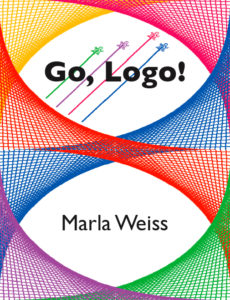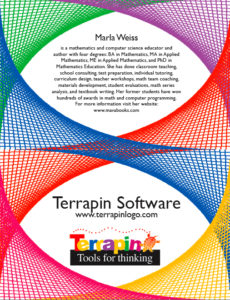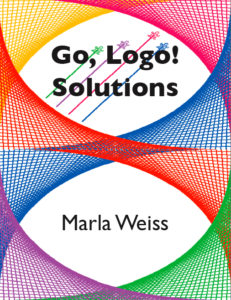Go, Logo! and Go, Logo! Solutions by Marla Weiss
published June, 2009
by Terrapin Software, Cambridge, MA
The dual-sided Logo language offers both graphics and list processing. Using Logo, students learn authentic coding, including functions, procedures, and recursion.
Logo is a computer programming language created in a research lab at the Massachusetts Institute of Technology (MIT) headed by Dr. Seymour Papert. He described Logo’s philosophy in his book MINDSTORMS: Children, Computers, and Powerful Ideas, first published in 1980.
Although many other computer programming languages have come and gone–FORTRAN, COBOL, PL1, and BASIC, just to name a few–Logo is thriving. Perhaps Logo’s success is due to its versatility. At the early end of the educational spectrum, elementary school children may write commands to move a graphic turtle around the screen. Through exploration, children learn about geometric relationships as well as language syntax. However, at the upper end of the educational spectrum, high school, college, and graduate students may write highly sophisticated programs, virtually without limitation. At this level, Logo, with its list processing capabilities and recursive properties, serves as an excellent first language prior to taking College Board’s AP Computer Science course.
Using her own materials in the early 1990s, Marla Weiss developed a Logo programming course for the Duke University Talent Identification Program (for academically talented middle school students). This course, Computer Applications of Math, was among the offerings at TIP at Davidson College for four years. Marla Weiss has reworked these materials into comprehensive textbooks called Go, Logo! (student workbook) and Go, Logo! Solutions (answer book) for Terrapin Software in Cambridge, MA.
For more information on Logo and to purchase Go, Logo! and Go, Logo! Solutions as well as Logo software from Terrapin Software, please visit: www.terrapinlogo.com


